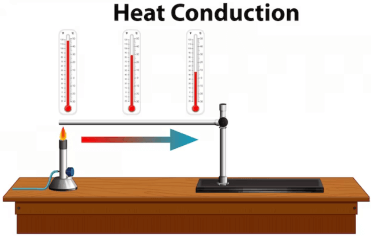Question
a.
Celsius scale
b.
kelvin scale
c.
Fahrenheit scale
d.
none of the above
Posted under General Knowledge
Interact with the Community - Share Your Thoughts
Uncertain About the Answer? Seek Clarification Here.
Understand the Explanation? Include it Here.
Q. The scale that is based on the theory that there is a lower possible temperature that exists in the universe is known as
Similar Questions
Explore Relevant Multiple Choice Questions (MCQs)
Q. We can easily determine the temperature of any body if we know
View solution
Q. A Celsius scale has
View solution
Q. A pot containing water at 30 °C is heated to 150 °C. What is the change in temperature in K?
View solution
Q. The most common scale used is
View solution
Q. As per kelvin scale theory, the lowest possible temperature is
View solution
Q. In Celsius scale, Ice point (lower fixed point) is assigned a value of
View solution
Q. In Celsius scale, Steam point(upper fixed point) is assigned a value of
View solution
Q. In Celsius scale, the temperature of steam from water boiling at one atmospheric pressure is called
View solution
Q. In Celsius scale, the temperature of pure melting ice at one atmospheric pressure is called
View solution
Q. A metal wire has a resistance of 500 ω at the ice point and 520 ω at the steam point. If the resistance of the wire is 510 ω, what is the room temperature?
View solution
Q. A pot containing water at 30 °C is heated to 150 °C. What is the change in temperature in °C?
View solution
Q. In an unmarked mercury thermometer, it was observed through an experiment that the length L₀ was 10 cm and the length L₁₀₀ was 30 cm. What is the temperature when Lθ was 15 cm?
View solution
Q. The transfer of thermal energy by means of currents in a fluid is called
View solution
Q. Convection currents do not occur in
View solution
Q. Without convection, the average surface air temperature on the Earth would be
View solution
Q. The movement of air in and out the chimneys due to a difference in density sets up a
View solution
Q. With convection, the current surface air temperature on the Earth is
View solution
Q. They spread out light rays
View solution
Q. When passing through a thin converging lens, the possible paths in which light rays can travel along are
View solution
Q. The lens which is thick at the center but thin at the edges is called
View solution
Recommended Subjects
Are you eager to expand your knowledge beyond General Knowledge? We've handpicked a range of related categories that you might find intriguing.
Click on the categories below to discover a wealth of MCQs and enrich your understanding of various subjects. Happy exploring!








